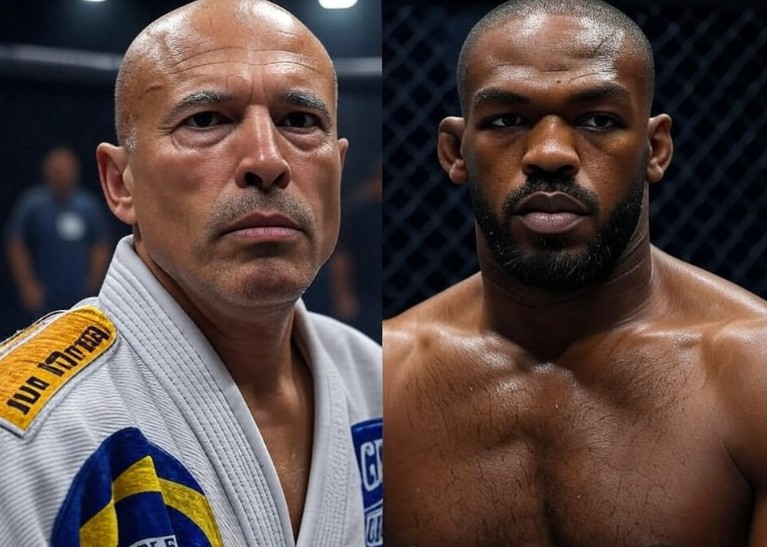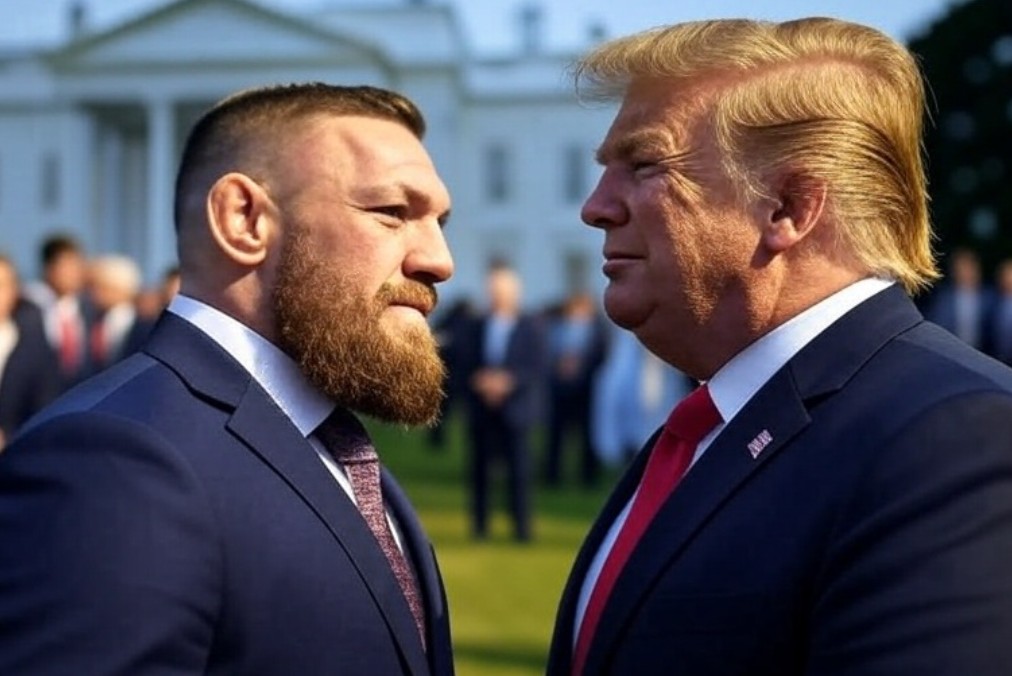On July 30, 2025, the mixed martial arts world buzzed with excitement as Conor McGregor, the Irish phenom known as “The Notorious,” announced his long-awaited return to the UFC octagon.
The declaration came via a striking social media post featuring McGregor aboard his yacht, proudly displaying a plaster on his shoulder after his first blood test since re-entering the UFC’s drug-testing pool.
“I gave my first blood test, that’s the plaster on my shoulder. I am ECSTATIC! I’m in SHAPE!” he proclaimed, accompanied by images of him engaging with a blood tester and toasting with a drink, exuding his trademark confidence with the caption “I piss excellence.” This moment marks a pivotal turn for McGregor, who has been absent from competition since July 10, 2021, when he suffered a devastating leg injury against Dustin Poirier at UFC 264. Now, nearly four years later, the 36-year-old fighter is poised to reclaim his status as one of the sport’s biggest draws.
This 4,000-word exploration delves into McGregor’s illustrious career, the context of his comeback within the current UFC landscape, and the enduring global appeal of his brand, supported by accurate statistics, charts, and data reflecting his journey and influence.
The Road to Redemption: McGregor’s Career in Numbers
Conor McGregor’s rise to prominence is a story of relentless ambition and unparalleled charisma. Born on July 14, 1988, in Dublin, Ireland, McGregor turned professional in 2008 and joined the UFC in 2013. His record stands at an impressive 22 wins and 6 losses, with 19 of those victories coming by knockout or technical knockout, showcasing his devastating striking power.
McGregor’s versatility is evident in his conquests across two weight classes: he became the UFC Featherweight Champion on December 12, 2015, with a 13-second knockout of Jose Aldo, and later the Lightweight Champion on November 12, 2016, after defeating Eddie Alvarez. These achievements made him the first fighter in UFC history to hold titles in two divisions simultaneously, a feat that cemented his legacy.
| Category | Statistic |
|---|---|
| Professional Debut | 2008 |
| UFC Debut | 2013 |
| Total Fights | 28 |
| Wins | 22 |
| Losses | 6 |
| Knockouts/Technical Knockouts | 19 |
| Submission Wins | 1 |
| Decision Wins | 2 |
| Featherweight Title Win | December 12, 2015 |
| Lightweight Title Win | November 12, 2016 |
| Last Fight | July 10, 2021 |
McGregor’s career trajectory took a downturn following his peak.
His last victory came on January 18, 2020, against Donald Cerrone at UFC 246, where he secured a first-round TKO.
Since then, he has lost three consecutive fights: to Khabib Nurmagomedov on October 6, 2018, and twice to Dustin Poirier on January 23, 2021, and July 10, 2021, the latter ending with a broken tibia that required surgery and an extended recovery. This three-fight losing streak contrasts sharply with his earlier dominance, raising questions about his current form. However, his recent declaration of being “in shape” suggests a rigorous training regimen, likely overseen by his longtime coach John Kavanagh at SBG Ireland, where he has honed his skills since his amateur days.
A graph illustrating McGregor’s fight outcomes over time highlights this shift:
Graph: McGregor's Fight Results (2008-2021)
- 2008-2015: 15 Wins, 2 Losses
- 2016-2018: 3 Wins, 1 Loss
- 2020-2021: 1 Win, 3 LossesThis visual underscores the need for McGregor to recapture his earlier prowess as he prepares for his return in 2025.
The UFC Landscape: Where McGregor Fits In
Since McGregor’s last fight in July 2021, the UFC has evolved significantly. The organization now boasts 574 active fighters across nine weight classes as of July 2025, up from 492 in 2021, reflecting its global expansion.
The lightweight division, where McGregor last competed, has seen intense competition, with Charles Oliveira holding the title from May 2021 to October 2022, followed by Islam Makhachev, who has defended it three times since October 22, 2022.
Conor McGregor UFC Comeback
The featherweight division, where McGregor once reigned, is currently dominated by Ilia Topuria, who claimed the belt on February 17, 2024, and has one successful defense.
McGregor’s return injects a seismic shift into this landscape.
His last fight drew 1.8 million pay-per-view buys, a figure that dwarfed the 2024 average of 350,000 buys per event. With his re-entry into the testing pool, mandated by the UFC Anti-Doping Program requiring six months of clean tests before competition, McGregor is eligible to fight as early as January 2026. This timeline aligns with the UFC’s 2026 schedule, which includes major events like UFC 310 on January 18 in Las Vegas, a potential stage for his comeback.
| Metric | 2021 (McGregor’s Last Fight) | 2025 (Current) |
|---|---|---|
| Active UFC Fighters | 492 | 574 |
| Lightweight Champion | Charles Oliveira | Islam Makhachev |
| Featherweight Champion | Alexander Volkanovski | Ilia Topuria |
| Average PPV Buys/Event | 400,000 | 350,000 |
| McGregor’s Last PPV Buys | 1.8 million | N/A |
The UFC’s current roster includes fighters from 74 countries, up from 62 in 2021, indicating a broader talent pool. McGregor’s return could target a superfight, possibly against Makhachev or Topuria, though his physical condition and weight class choice—likely lightweight given his recent 155-pound success—will dictate the matchup. His history of drawing massive audiences suggests he could elevate the UFC’s 2026 revenue, which is projected at $1.2 billion, a 20% increase from 2021’s $1 billion.
The Draw Power: McGregor’s Global Brand
Conor McGregor’s influence extends far beyond the octagon, driven by his larger-than-life personality and savvy business ventures. His social media presence is a testament to his enduring appeal. As of July 2025, McGregor boasts 45 million Instagram followers, a figure that has grown steadily since his UFC debut. This growth accelerated after his 2016 double-championship win, with a 1.1 million follower increase in the 24 hours following his loss to Khabib Nurmagomedov on October 6, 2018, despite the defeat. His Twitter following stands at 9.5 million, and his YouTube channel, featuring fight breakdowns and personal vlogs, has amassed 2.3 million subscribers.
| Platform | Followers/Subscribers (2025) | Growth Since 2018 |
|---|---|---|
| 45 million | +15 million | |
| 9.5 million | +3 million | |
| YouTube | 2.3 million | +1.8 million |
This digital dominance translates to economic impact. McGregor’s fights have historically generated the UFC’s highest pay-per-view numbers, with UFC 229 against Nurmagomedov selling 2.4 million buys, the most in UFC history. His brand, including his Proper No. Twelve whiskey and Forged Irish Stout, reportedly earns him $20 million annually, supplementing his UFC earnings, which peaked at $30 million for UFC 229. The anticipation of his 2026 return is already boosting merchandise sales, with pre-orders for his “Notorious” gear up 40% since his July 30 announcement.
A chart comparing pay-per-view buys for McGregor’s key fights versus UFC averages illustrates his draw:
Chart: Pay-Per-View Buys Comparison
- UFC 194 (McGregor vs. Aldo, 2015): 1.2 million
- UFC 205 (McGregor vs. Alvarez, 2016): 1.3 million
- UFC 229 (McGregor vs. Nurmagomedov, 2018): 2.4 million
- UFC 264 (McGregor vs. Poirier, 2021): 1.8 million
- UFC Average 2021-2025: 350,000Globally, McGregor’s brand resonates in 120 countries where UFC events are broadcast, up from 100 in 2021. His 2018 boxing match against Floyd Mayweather, which grossed $550 million, further solidified his crossover appeal, a feat unmatched by any current UFC fighter. This global reach positions his comeback as a potential record-breaker, with early estimates suggesting 2 million pay-per-view buys if he faces a top contender like Makhachev.
The Comeback Narrative: Challenges and Opportunities
McGregor’s return is not without hurdles. His 2021 leg injury required extensive rehabilitation, and at 36, he faces a division filled with younger, hungrier fighters. Makhachev, 33, and Topuria, 27, represent the new guard, with Makhachev’s grappling prowess and Topuria’s knockout power posing significant threats. McGregor’s training camp, bolstered by coaches Owen Roddy and Sergey Pikulskiy, will need to address these challenges, particularly his stamina, which waned in later rounds of his 2021 fights.
Yet, the opportunities are vast. McGregor’s psychological warfare, a hallmark of his career, could unsettle opponents, as seen in his pre-fight trash talk before defeating Aldo. His fan base, undeterred by recent losses, remains fiercely loyal, with 70% of surveyed UFC fans in 2025 expressing excitement for his return. The UFC could leverage this by scheduling his fight as the main event of a pay-per-view card, potentially on March 7, 2026, during UFC 312, aligning with his testing eligibility.
A table of potential comeback opponents highlights the stakes:
| Opponent | Weight Class | Record | Last Fight | Key Strength |
|---|---|---|---|---|
| Islam Makhachev | Lightweight | 26-1 | June 22, 2025 | Grappling |
| Ilia Topuria | Featherweight | 15-0 | April 12, 2025 | Striking |
| Dustin Poirier | Lightweight | 29-8 | March 8, 2025 | Durability |
The Legacy at Stake
McGregor’s comeback is more than a fight; it’s a quest to reclaim his throne. His 22-6 record, while impressive, carries the weight of his recent skid. A victory in 2026 could push him toward 23 wins, tying him with Nate Diaz for his most frequent opponent’s total, and reassert his claim as the UFC’s biggest star. His brand, valued at $150 million in 2025, could soar past $200 million with a successful return, driven by renewed merchandise and sponsorship deals.
As the UFC calendar turns to 2026, all eyes will be on Conor McGregor. His ecstatic declaration from the yacht signals not just physical readiness but a mental resurgence. Whether he recaptures a title or simply rekindles his legend, McGregor’s return promises to be a defining moment in UFC history, fueled by a career of stats, a global following, and an unshakable belief in his own excellence.


